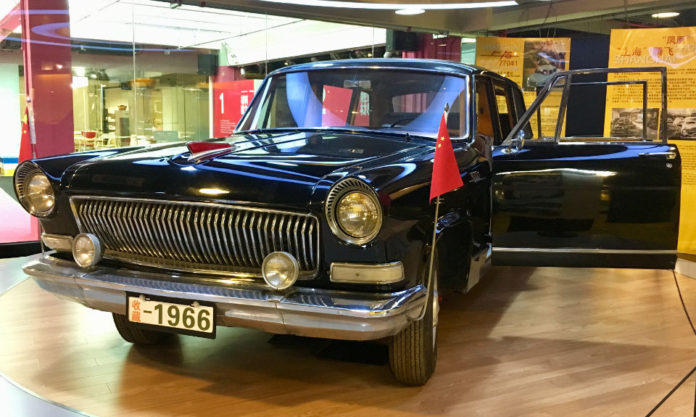It’s not surprising that China’s first official state car, built during the heart of the Mao era, should be named after the symbol of socialist revolution; the “Hong Qi”, or “Red Flag”.
Built in 1958, just in time for the National Day parade marking 10 years of the People’s Republic, the luxury car did not simply carry China’s political elite on a practical level, but its production and design were also laden in political motivation and cultural symbolism.
Before Hongqi came into existence, China’s leaders used a variety of luxury cars from abroad, with Mao himself riding a car donated by Stalin, the bulletproof ZIS-115. In the late 1950s however, Sino-Soviet relations began to rapidly deteriorate and Mao’s Great Leap Forward advocated a move away from reliance on foreign countries. The automobile industry was no exception. Stalin’s gift simply would not do and Mao demanded his very own Chinese-made state limousine.
The result, the Hongqi CA72 sedan, was modelled after an existing Chinese car known as the “Dong Feng”, or “Eastern Wind”, produced by First Automotive Works (FAW) in Changchun and itself an imitation of a French vehicle. The first prototypes were sent to Beijing where they were tested ahead of National Day in the back garden of Zhongnanhai.
The slick black vehicle, measuring 5.7 metres in length, could reach a top speed of 128km/h. With a fuel consumption of nine litres per 100km it was a relative gas-guzzler. The rear doors were hinged at the back, meaning they opened inwards to face the front set of doors, a design feature known as “suicide doors”, which has the dual function of creating a bulletproof shield for the disembarking passenger.
On either side of the bonnet were five red flags representing the occupations of the Chinese people, which were later changed to three, standing for the general line of the party, the Great Leap Forward and the people’s commune.
Other elements of the car’s design made specific reference to Chinese culture such as the front grille which mimics the shape of a Chinese fan, and the tail lights that are shaped like red lanterns (a detail still preserved in modern versions today). Elsewhere, the car’s interior dashboard was made with Fujian “chi bao sha” lacquer and the seats covered in famous Hangzhou brocade.
As the reputed Italian automobile designer, “Pinin” Farina, put it, the Hongqi is “a perfect example of the combination of Oriental art and automobile technology”.
With some bumps along the way, Hongqi official state cars have been periodically updated and more recent models continue to be used by the ruling elite today. Xi Jinping is driven around in the Hongqi L5 model, which retains many of the design elements of its forerunner, but comes in at a hefty ¥5 million (around US$800,000). It was reported in 2014 to be the most expensive Chinese-made car ever available for purchase.
In an industry historically dominated by western aesthetics, the original Hongqi stands out for its subtle, yet decidedly Chinese elements. From initial production to its revamped use today, the car is inescapably associated with the Chinese Communist Party, but nonetheless a fine piece of industrial design that drives home Chinese style.









